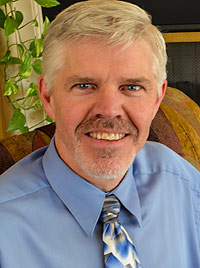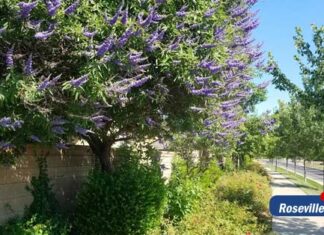Your attitude may be affected by your latitude
Sacramento, Calif. – I didn’t notice Seasonal Affective Disorder (symptoms of depression that develop in the darker winter months) while growing up in Sacramento, but, after moving to Portland, Oregon, it became apparent that every November, my mood would drop significantly. The contrast in mood between the almost constant emotional high of living in the summer light and beauty of the Pacific Northwest, and my improved mood when I returned south to Sacramento over the Christmas holidays, and then back to the more normal wintertime darkness in Portland, was staggering. During the darker months I found myself traveling 3 hours to the other side of the Cascades to Bend, Oregon, where light was normally in abundance despite the colder temperatures, to energize myself and counter feelings of gloominess.

Each New Year’s I vividly remember noticing the abundant light and sunshine when watching College Bowl games that were being broadcast from warmer, sunnier parts of the USA. Even the light from my small little TV stood as a sharp contrast to the damp and drearier Portland area. Like the fans attending the games, I almost felt like I needed sunglasses to watch the game.
My upbeat mood would return to much more normal toward the end of January as I felt the extra sunlight each day. The week we started Naturopathic Medical school, with students in attendance from all over the world, we were strongly advised by the school faculty that the best way to deal with the Portland winters was to get outside as often as possible. The NDs reminded us that no matter how dark or rainy it was, there would always be more natural light outside, than inside. Rain, shine or overcast skies, they suggested we put on our Parkas or raincoats and get outside to improve mood and increase energy.
Seasonal Affective Disorder Symptoms
The medical condition is Seasonal Affective Disorder, characterized by fatigue, poor concentration, and an intense craving for carbohydrates. Feeling extremely sleepy is common, but sleep is rarely refreshing. The slowdown of the body, and overindulging in carbohydrates, can lead to weight gain, and suppressing the immune system.
Natural sunlight keeps the pineal gland-producing melatonin in balance. But when it is dark most of the time, there’s nothing to keep the melatonin levels in check. Also, cortisol, the adrenal stress hormone often rises, further contributing to fatigue, depression, and sleeplessness. Serotonin, the precursor to melatonin, may also drop, contributing to depression, anxiety, and carbohydrate cravings.
NDs Attempt to Find and Treat the Cause of Dis-Ease
Whether the condition is SAD, or Shingles, NDs attempt to find and treat the cause of any symptom or dis-ease. While the cause of SAD is thought to be the dark winter months, other factors can also weigh heavily on a greater manifestation of SAD, including: low Vitamin D; imbalanced neurotransmitters, such as: serotonin, GABA, dopamine; hormone imbalances: thyroid, DHEA, cortisol, testosterone, estrogen, progesterone; environmental toxins; vitamin and mineral deficiencies such as: magnesium, B12, folate, B1; digestive issues; food and environmental allergies, such as gluten; and blood sugar balance, etc.
Treating S.A.D.
1. Light
Over and over again, it has been demonstrated that light therapy is the most effective way to significantly reduce SAD symptoms. Installing full-spectrum lighting that imitate the effects of the sun, also spending as much time as possible outside, and in nature each day, and arranging your inside time near a window as much as possible, all make a significant difference. Some people find that having a dedicated SAD light on a timer set to turn on each morning gets the day started on the right track before even getting out of bed. Others set up a light in the bathroom or kitchen so as to glean light while going about morning routines.
2. Exercise

Regular exercise has been proven to help with traditional types of depression, and SAD is no different.
Exercising boosts endorphin and serotonin levels, and can help improve sleep at night, which is a common symptom of SAD. Exercising outside with natural light, is even better, even though exercising indoors is still beneficial. Make 60 minutes of fitness per day part of your normal routine.
Staying active can not only help ease anxiety and depressive feelings, and can even help with brain fog.
3. Vitamin D supplement
Vitamin D, the “sunshine vitamin,” has been linked to depression. Virtually all of my patients, regardless of why they came to the clinic, are deficient in vitamin D. What I have personally observed in patients with seasonal affective disorder, or any other mood issue (and that may pretty much include all of us), have low levels of vitamin D. After just three weeks on D, mood improves dramatically. It is like a dry sponge immersed in water.
Even in Sacramento, there’s no to little vitamin D from the winter sun, regardless of the temperature or clear skies. It is about latitude. So, your attitude is partially determined by your latitude. To test for vitamin D, virtually all doctors use the vitamin D 25OH test. I recommend 50-90 as a reference range. 50 was chosen because that is what human beings can generate from the sun under optimal conditions, such as living in Ecuador, the Amazon, etc. There is no documentation of any medical problem occurring from too much vitamin D until reaching 130-150 on the test. The amount of D each person needs varies from 2,000-10,000 IUs per day, depending on genetics, skin color, obesity, age, other synergistic nutritional factors, etc. Always take vitamin D with vitamin K2.
4. Get outside
Get outside every day, regardless of light or weather conditions.
Sleep with curtains and blinds open to get in any glimmer of sunshine in the morning.
Bundle up and try to get as much natural light as possible. Try to exercise outside, whether it is for a short walk, or a weekend game of fetch with the dog.
5. Talk it out
Cognitive behavioral therapy (CBT), a type of psychotherapy that helps people change unhealthy habits of thinking, feeling and behaving, can help transform our way of thinking and focusing on positive solutions, instead of being negative, such as; “Forget it, I’m skipping those dinner plans I made” or, “I’ll wait until it’s sunny and warmer to go outside for a walk.”

6. Eating a healthy diet is critical
Choosing healthy food can make a huge difference. While people with SAD crave carbs, eating healthy fats, lean protein, and vegetables will stabilize blood sugar. Eating higher carb foods like bread, sweets, potatoes and other starchy foods will increase the “insulin frenzy” to eat more carbs, exasperating SAD.
Instead, focus on tryptophan-loaded foods, which stimulates serotonin, such as turkey, wild-caught salmon, firm tofu, Edamame
(boiled soybeans), pumpkin seeds, oatmeal, eggs (pasture-raised), and peanut butter (old-fashioned with the oil on top).
Avoid alcohol (depressant and sleep disruptor) as much as possible, and limit caffeine to one cup a day.
The darker months pose a special challenge to the above recommendation as these are the months of our most indulgent holidays. Knowing this, plan ahead and bring vegetable and protein platters, non-alcoholic/mocktails, or other healthy treats to holiday parties and potlucks.
7. Spending time and energy on some activity you enjoy
Research shows that spending time on an activity or hobby that you enjoy can improve your mental health and mood. Whether it is an outdoor activity, personal growth, creative pursuits, or team sports, the act of engaging in something enjoyable and meaningful releases neurotransmitters. These feel-good chemicals can not only improve our mood but motivate us to do the hobby or activity again.
8. Reach out for help
A naturopathic doctor perspective on SAD would include the above-mentioned treatments, but also potentially include the following which would be best under the supervision of a Naturopathic Doctor:
- Melatonin which tends to be low in people who suffer from SAD.
- St. John’s Wort, helpful when combined with light therapy.
- SAMe (not to be taken by people with bipolar without supervision). SAMe increases the concentration of brain neurotransmitters responsible for mood.
- 5-HTP, a precursor to serotonin, best taken with methylated B-Complex.
- L-Tryptophan which increases the neurotransmitter Serotonin
- Gingko biloba.
- Massage
- Hydrotherapy
- Homeopathy
- Herbal Medicine
- Detoxification
References: Prescription for Natural Cures, Stengler, Mark, NMD, Balch, James, Balch, Robin Young.

Explore additional topics from Dr. Godby, ND, MA at Natural Wellness.
As a naturopathic doctor for the last 18 years, I have witnessed the power of a preventative lifestyle and naturopathic medicine to transform the health and lives of thousands of patients.
Sacramento Naturopathic
2530 J Street, Suite 100
Sacramento, CA 95816
Phone: (916) 446-2591
sac-nd.com/dr-dennis-godby-nd-ma
(21+ years strong)
Welcome to the brighter side!
Get in front of local customers! 24/7 (365)























